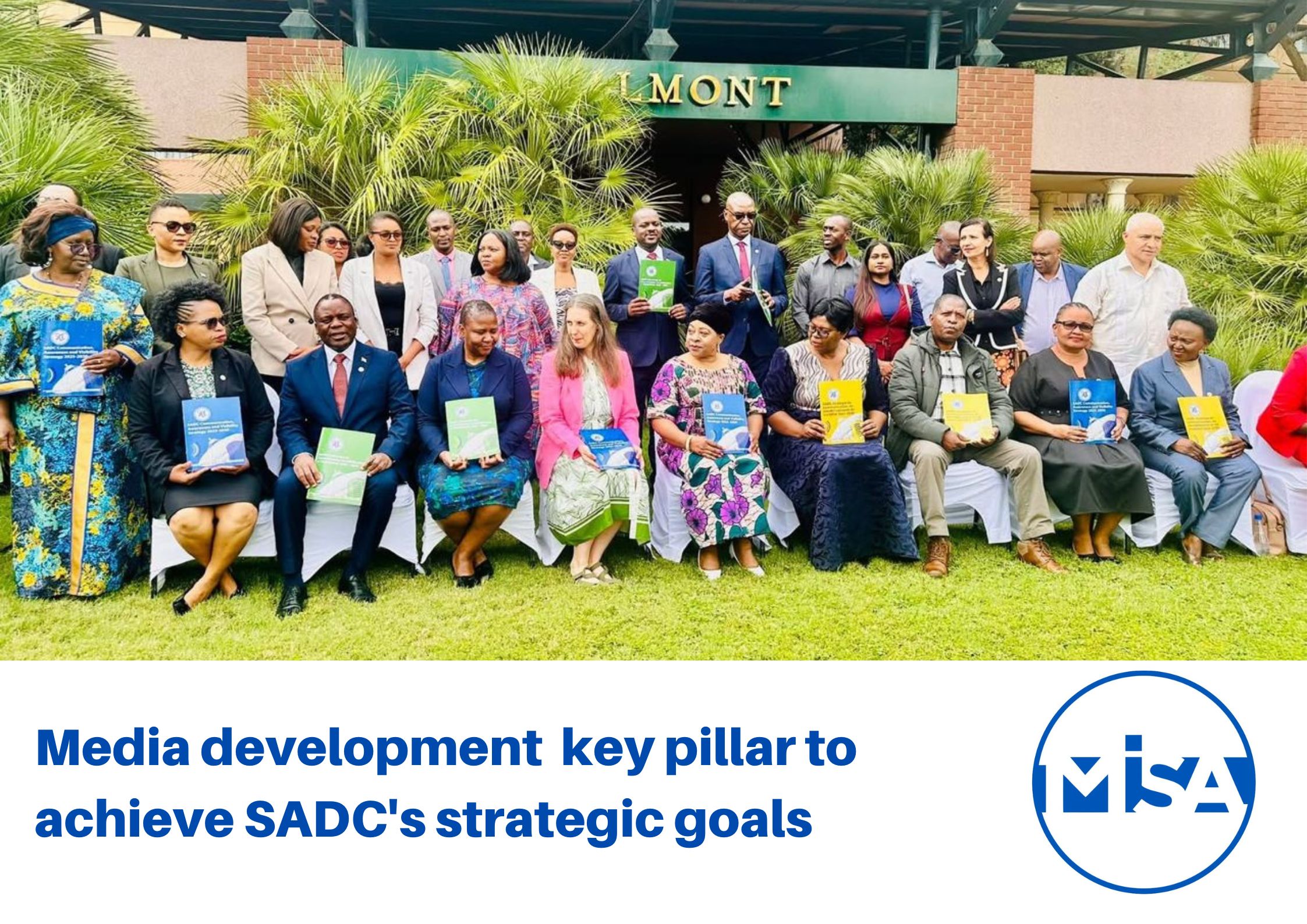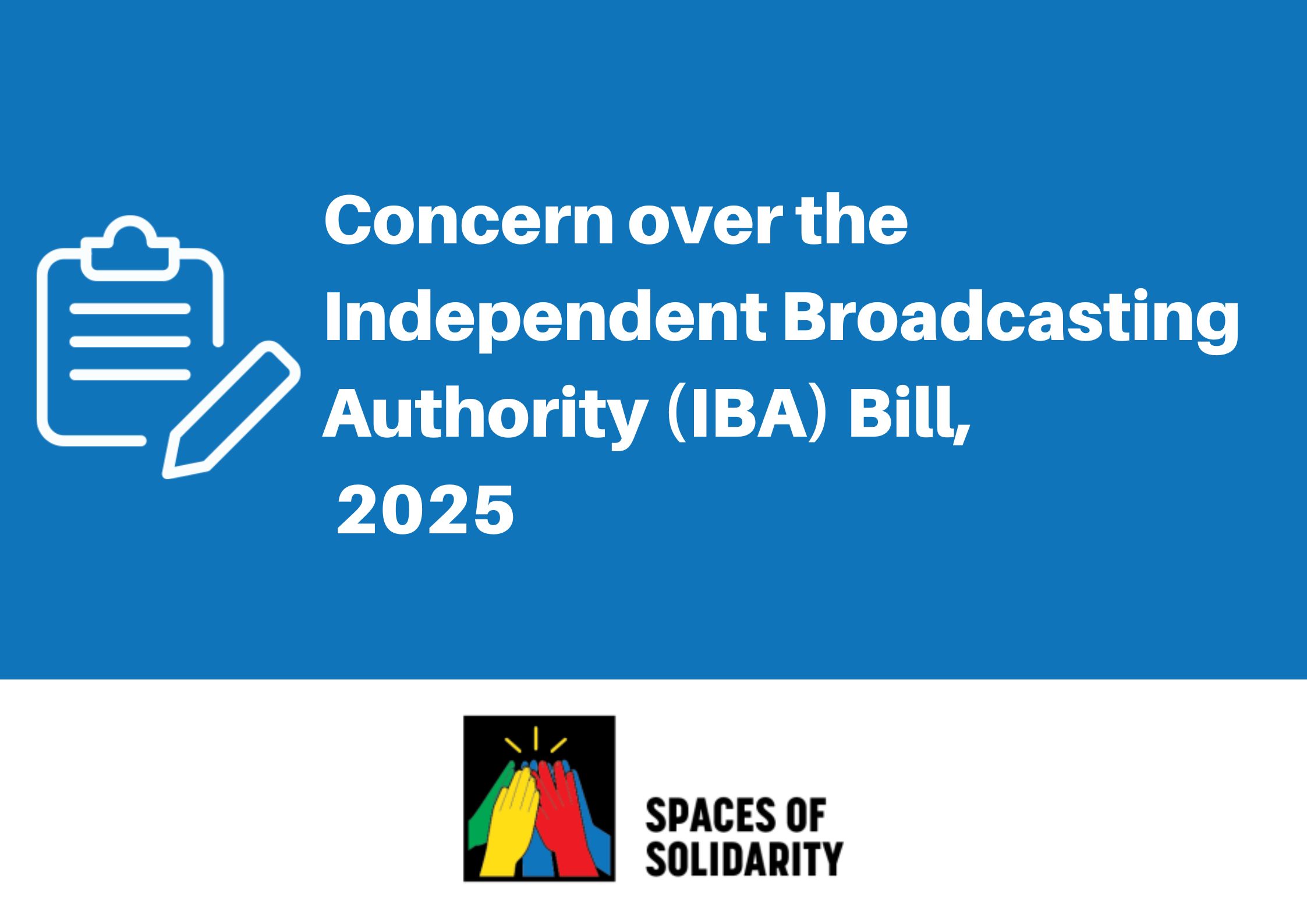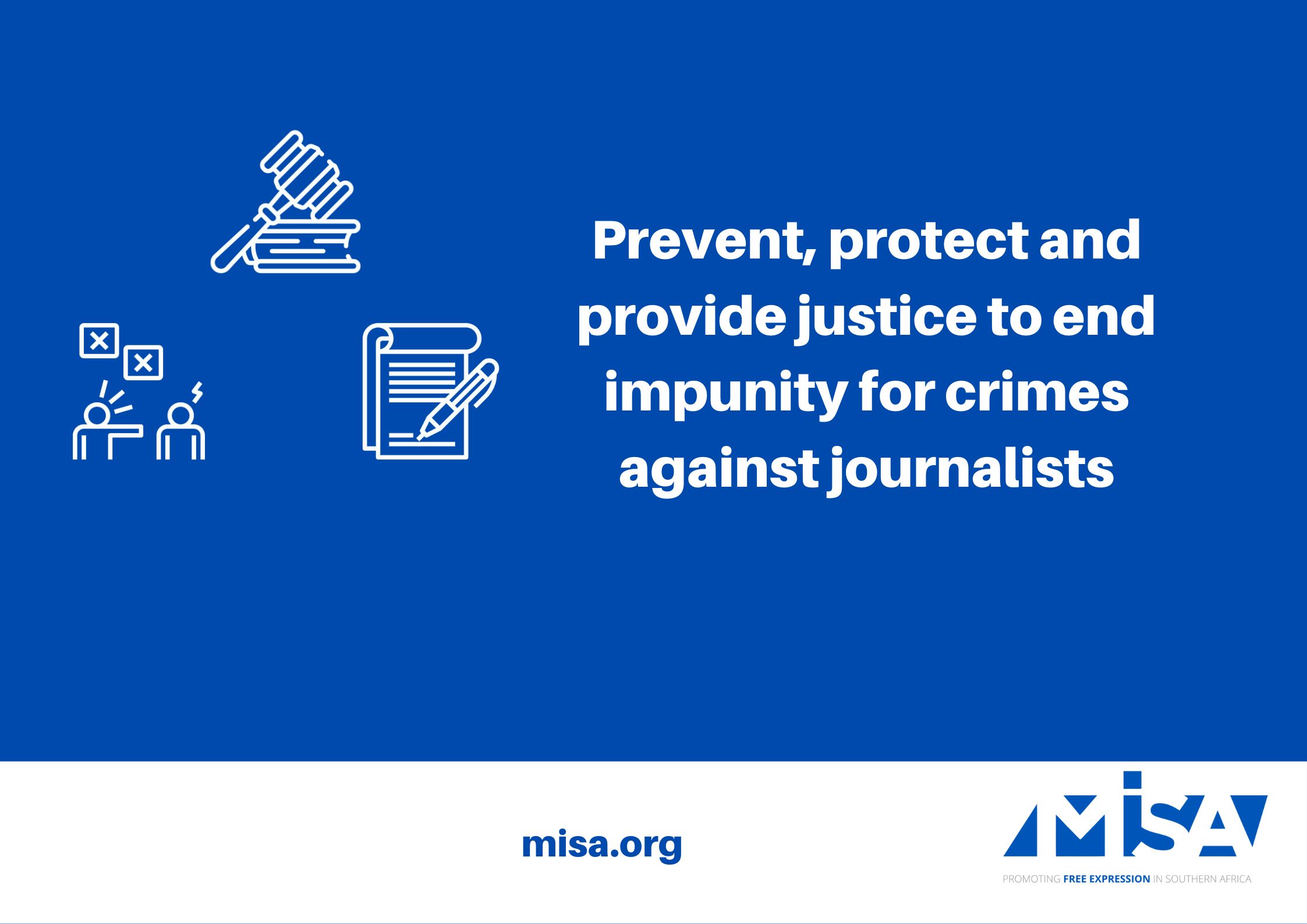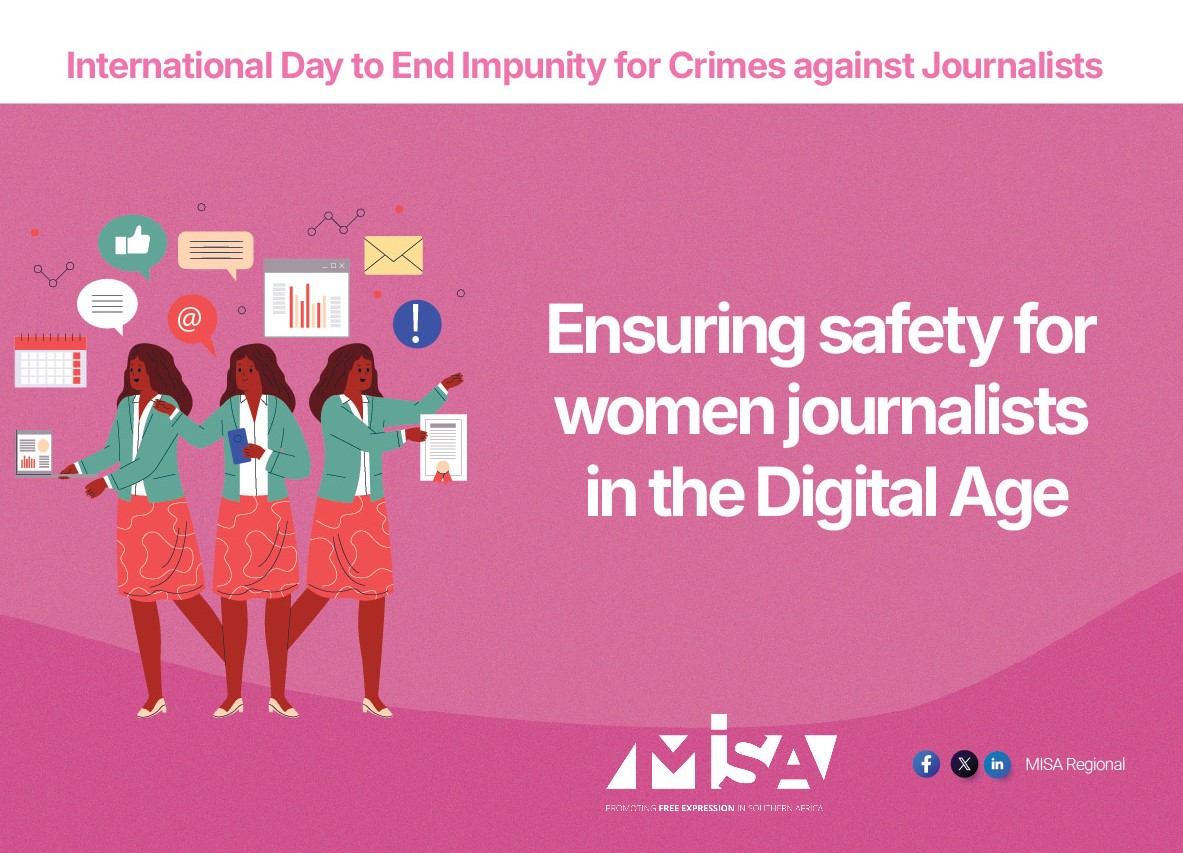On 18 November 2025, the Southern Africa Development Community (SADC) launched its five-year communications and visibility strategy in Gaborone, Botswana, based on four strategic objectives.
The strategic objectives are:
- improved media development – strengthen media ecosystems to support effective communication and engagement on regional initiatives.
- increased visibility and awareness of SADC – strengthen public knowledge of SADC’s founding documents, institutions, history, policies and programmes across Member States and globally.
- strengthened strategic communication capacity – improve regional and national communication frameworks to effectively promote SADC’s activities, impact, and media development, advancing regional integration.
- position the SADC corporate brand and identity – establish SADC as a trusted, and organised entity, reinforcing its role as a driver of regional integration, cooperation and development.
Speaking on the sidelines of the launch, MISA Regional Governing Council (NGC) member and Chairperson of MISA Botswana, Thomas Nkhoma, hailed the launch of the communication and visibility strategy as a critical milestone.
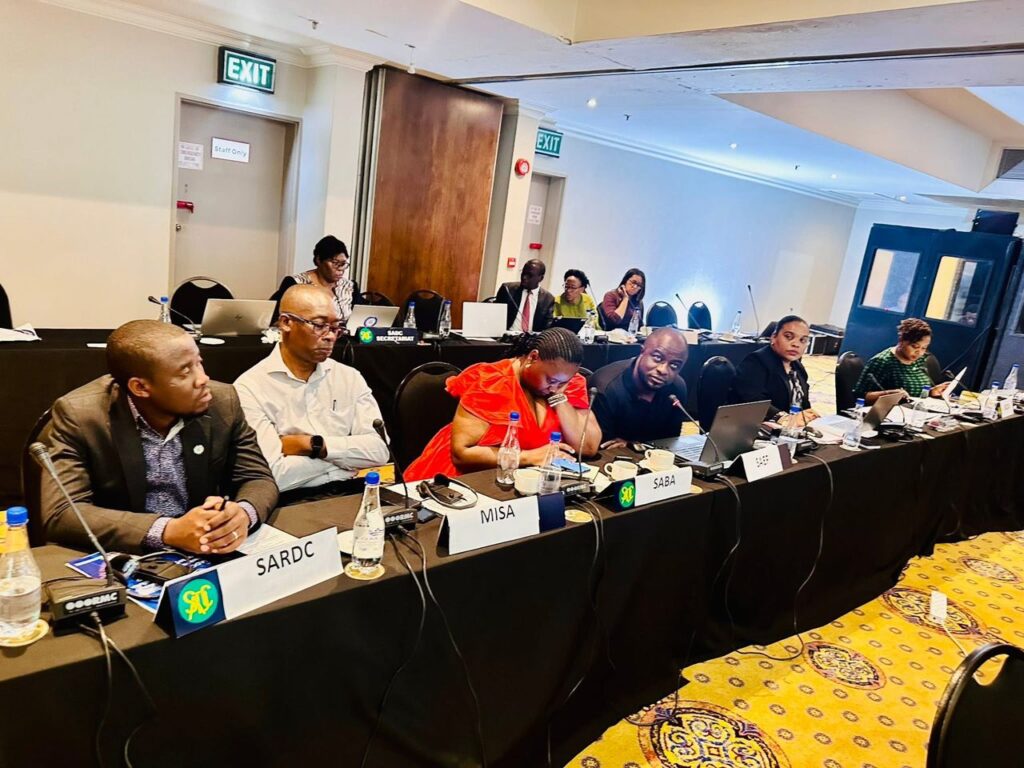
MISA Regional Governing Council (NGC) member and Chairperson of MISA Botswana, Thomas Nkhoma during the meeting.
Nkhoma said the strategy is anchored on the strengthening of media ecosystems towards the attainment of SADC’s strategic objectives and initiatives.
“At MISA, we identify broader multilateral institutions as strategic players in media development, including SADC,” he said
“To this end, the launch of this strategy marks a significant milestone, as SADC adopts a holistic view of media as a stakeholder that requires development to effectively cover regional issues in depth.
“We are also happy that SADC engaged both ourselves and the broader stakeholder chain in developing this strategy, which gives it impetus and ownership.”
Nkhoma was hopeful the efforts at hand would connect to the broader global conversations on the ever-changing nature of communications and address the interplay of issues surrounding:
- information integrity
- information as a public good
- media sustainability
- media development in the age of evolving ICTs
- media regulation and policy frameworks
- climate change
- shifts in the geopolitical architecture
The launch was officiated by the SADC Deputy Executive Secretary for Regional Integration, Ms Angele Makomba N’tumba whose key message was on the need for increased media and communications outcomes that capture the stories of the region towards the attainment of regional initiatives such as the Regional Indicative
Strategic Development Plan (RISDP 2020–2030) and SADC Vision 2050.
Ms N’tumba said the SADC Council of Ministers approved the Communication, Awareness and Visibility Strategy 2025 – 2030 and directed the SADC Secretariat to commence its implementation in close collaboration with Member States, particularly the SADC National Contact Points, SADC National Media Coordinators, and other relevant stakeholders.
“The SADC Regional Indicative Strategic Development Plan (RISDP) 2020–2030, our guiding blueprint for regional development and integration, places enhanced awareness and visibility of SADC, its mandate, activities, and impact, at the heart of its strategic objectives.
“This emphasis is both timely and well-founded,” said Ms N’tumba
She said e every year, Member States and International Cooperating Partners generously commit resources to support SADC programmes, while its ministers invest significant time and expertise to assess progress, shape strategic direction, and endorse the annual operational plan and budget.
“It is our collective responsibility to communicate the outcomes and benefits of these efforts, to showcase the relevance of SADC initiatives across our region and highlight their tangible, positive impact on the lives of our citizens,” said Ms N’tumba
Amplifying the Deputy Executive Secretary’s message, the SADC Head of Communications and Public Relations at the Secretariat, Ms Barbara Lopi, noted that the strategy was both timely and strategic.
Ms Lopi said the strategy addresses the rapid environmental changes driven by technology, highlighting the need to galvanise engagement with multiple policymakers and stakeholders in real time.
She noted that the strategy builds on the solid foundation laid by the revised SADC Communications and Promotions Strategy 2016 – 2020..
“It reflects our evolving priorities, the insights we’ve gained, and the realities of an ever-evolving media landscape in which we now operate. Our previous Communication Strategy served us well, it amplified our voice, strengthened our online presence, and deepened engagement with stakeholders.
Yet as the communication environment continues to evolve, so too must our approach.
“That is why today, we are proud to unveil a renewed communication strategy, one that honours past achievements, addresses emerging challenges, and positions us for even greater impact and reach,” Ms Lopi said.
Commenting on the importance of the launch, MISA Regional Director, Dr Tabani Moyo, who was involved in the technical work from the outset, said the strategy was both pragmatic and forward-looking.
“This is part of the broader aim to strengthen African voices and those of the wider global south in effectively telling their stories. As Chairperson of MISA Botswana, Nkhoma emphasised, it begins with enhancing media ecosystems to engage with African realities and to cover stories in depth for well-informed decisions,” said Dr Moyo.
“Similarly, as MISA, we express gratitude to the multiple stakeholders we continue to engage with at SADC, the African Union, COMESA, UNESCO, and the United Nations Agencies through our various responsibilities.
“This allows the voice of civic players and citizens to be expressed in normative instruments and frameworks, thereby contributing to the advancement of humanity.”
MISA Regional Communique




